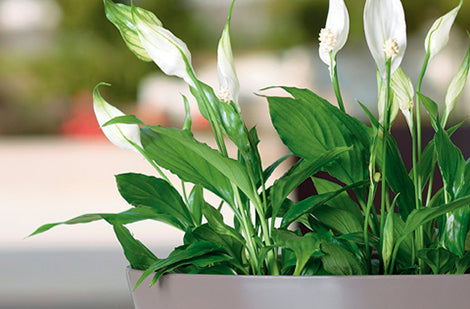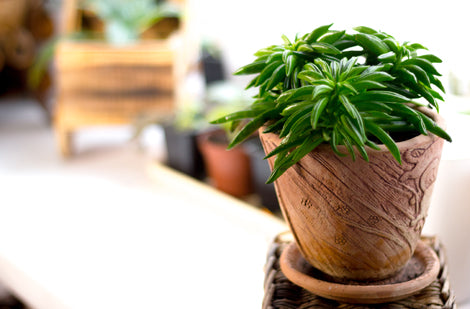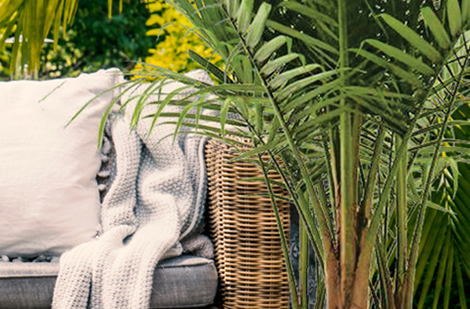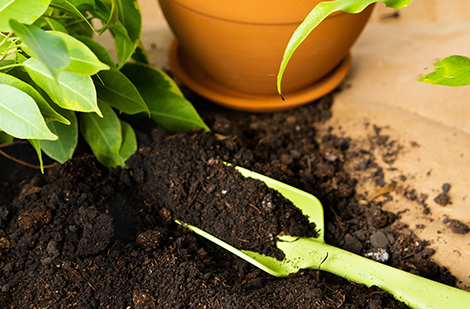Alocasia Sinuata
Alocasia sinuata
Alocasia sinuata
Exposure
- Bright indirect light
- Unique quilted foliage
- Rare and sought after
- Beautiful houseplant
- Adapted to humidity
- Bright indirect light
The Alocasia sinuata is a prized tropical indoor plant renowned for its unique and textured foliage. Native to the limestone forests of the Philippines, this beauty showcases glossy leaves with a bullate surface, giving them an embossed appearance. Leaves emerge light green and darken to deep green, often with darker veins that enhance the quilted effect. With a mature size reaching around 35 cm (14 inches) in height and leaves of 20-25 cm (8-10 inches) in length, the Alocasia sinuata is a remarkable addition to any plant collection.
Key Features
- Foliage: Glossy, deep green leaves with a distinctive bullate surface that gives them a quilted or embossed look. Veins are often darker, enhancing the pattern.
- Habit: Herbaceous, upright plant.
- Growth: Generally considered moderate.
- Care: Relatively easy for a tropical plant, requires attention to watering and humidity.
- Appeal: Its textured foliage and unique appearance make it highly sought after by collectors.
Care Tips
- Light: Prefers bright, indirect light. Avoid direct sunlight that can scorch the leaves. A spot near an east or west-facing window is ideal. If natural light is insufficient, a grow light can be used.
- Soil: Requires a well-draining mix rich in organic matter. A potting mix designed for tropical plants with added perlite is recommended for good drainage.
- Watering: Keep the soil evenly moist but not waterlogged. Allow the top 5-7 cm (2-3 inches) of soil to dry out between waterings to prevent overwatering and root rot. This plant is not drought-tolerant, and prolonged dryness can lead to brown leaf edges.
- Humidity: Requires high humidity, ideally 50% or higher. Increase humidity by misting the plant frequently, placing it near other plants, or on a pebble tray filled with water.
- Temperature: Prefers temperatures between 18-25°C (65-77°F). Avoid sudden temperature changes and cold drafts.
- Fertilization: Fertilize lightly during the growing season (spring and summer) with a balanced indoor plant fertilizer about once every two to four weeks. Reduce or stop fertilizing in fall and winter.
- Pruning: Generally not necessary, except to remove any yellowing or damaged leaves.
Plant details
Dimensions
Dimensions
Characteristics
Characteristics
Habit:
Flowering colours:
Plant needs
Plant needs
Watering:
- Tolerates wet soil
- Requires well-drained soil
Maintenance:
- Easy
- Fertilize regularly
Soil requirement:
Features
Features
Resistance:
Attract:
Use:
Attribute:
- New
- Slow Growth


Related articles
-

Potting House Plants: which pot to choose
Read the articleBien qu'une plante puisse passer plusieurs mois et parfois même plusieurs années dans le même pot, avec le temps ses racines envahissent tout l'espace disponible. Il devient important de choisir...
-

Moving Up a Level: Advanced Guide to Repotting ...
Read the articlePropagate your violets! Discover the simple cutting method, the secret to the perfect soil mix, and how to fight mealybugs.
-

The Complete Guide to Buying and Caring for Ind...
Read the articleBringing a touch of nature to your home with plants is a great idea! Not only do they beautify your living space, but they also help purify the air. However,...
-

Build Your Own Terrarium: The Complete, Easy Gu...
Read the articleThe terrarium is the perfect addition to your decor! Learn how to easily create your own miniature garden with our complete guide.
-

Create a garden with succulents
Read the articleLes plantes grasses n’ont pas leur pareil pour créer des arrangements à la fois impressionnants par leurs couleurs, leurs formes et leurs textures et faciles à entretenir. Qu’on les agence...
-

Houseplants to discover - Butterfly Palm or Are...
Read the articleDypsis lutescens, anciennement Chrysalidocarpus lutescens
-

Calathea: The Essential Guide to Mastering the ...
Read the articleCalathea is a stunning addition, but it's demanding! The key to its success? Humidity. Find out why tap water and dry air are its worst enemies and how to give...
-

Jade Plant (Crassula): The Easy-Care Succulent ...
Read the articleThe jade plant is a must-have! Learn all the secrets to caring for this resilient succulent that naturally grows into an elegant miniature tree.
-

Madagascar Dragon Tree: Embrace Effortless, Gra...
Read the articleAdd a modern touch to your home! The Madagascar Dragon Tree is low-maintenance, perfect for beginners, and stands out with its slender look and two-toned foliage.
-

Aspidistra: The "Cast Iron Plant" Indestructibl...
Read the articleDon't have a green thumb? The Cast Iron Plant is for you! Tolerant of shade and missed waterings, it's perfect for lobbies and offices. Learn how to maintain its leathery...
-

Embrace the Fern: The Champion of Shade and Tro...
Read the articleGot a dark corner? Ferns are your allies! They are easy to care for if you master one factor: humidity. Learn how to water them perfectly for spectacular and full...
-

-

Kalanchoe: The Secret to Massive Blooms That La...
Read the articleNeed lasting colour? The Kalanchoe blooms profusely for over two months! An easy succulent that tolerates neglect and adds a vibrant touch to your home.
-

Snake Plant: The Unkillable Houseplant, Perfect...
Read the articleThe Snake Plant is an ideal houseplant for everyone, whether you're a beginner or an experienced gardener. Its resilience, ease of maintenance, and decorative appearance make it an essential choice...
-

Edible Flowers: Top 5 for Garden and Kitchen
Read the articleOffrant une belle gamme de couleurs, de formes et de textures, les fleurs comestibles enthousiasment les amoureux de jardinage et de cuisine.
-

Tropical Flowering Plants: A touch of the exoti...
Read the articleLes plantes tropicales à fleurs ont tout pour faire tourner les têtes! Colorées, odorantes, généreuses, elles n’ont pas leur pareil pour égayer une aide de repos, un balcon, une terrasse....
-

Keep a palm tree on the terrace - why not!
Read the articleDifficile de résister à l’appel des tropiques quand le soleil et les températures clémentes se pointent le bout du nez. Rien de mieux qu’un palmier sur la terrasse ou le...
-

Bring Your Plants Indoors for Winter: The Compl...
Read the articleDon't get caught by the first frost! Prepare your outdoor plants for winter with our complete guide.
-

When and how to repot house plants
Read the articleAlthough a plant can spend several months and sometimes even several years in the same pot, over time its roots invade all the available space.
-

How to select the best houseplant potting soil
Read the articleIl est important d'adapter le substrat utilisé au type de plante. Plusieurs mélanges sont possibles à partir de terre brune, de mousse de tourbe, de perlite ou de vermiculite. Pour...



























